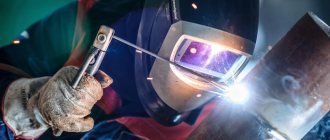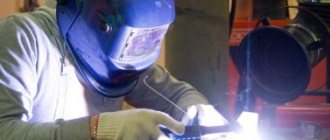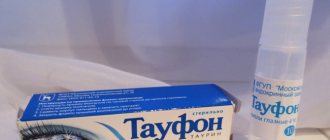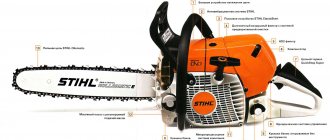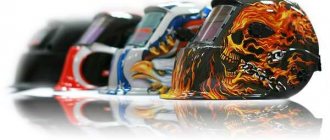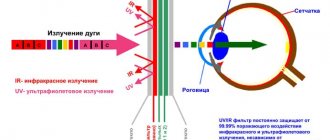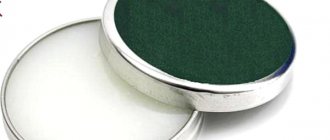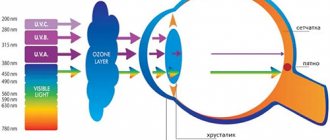Rosin does not always help to properly solder parts to each other, and then soldering acid comes into play, which can remove the oxide film from the surfaces and properly prepare them for soldering. If rosin flux copes well with the “duties” of preparing for joining elements made of copper, then acid compositions tin not only them, but also parts made of copper alloys (brass, bronze), stainless and black steel, nickel, precious metals and even aluminum or cast iron
Figure 1. Soldering acid is needed to remove the oxide film and prepare the surface of the part for soldering.
What you need to know about flux
Flux is a substance that facilitates the soldering process. It removes oxides before soldering parts and during tinning. Due to high soldering temperatures, the oxidation reaction will accelerate and the oxide layer will appear faster on the soldered surfaces. Flux reduces this process and also wets the surface, which creates a “surface tension” effect and the solder is easier to distribute.
The choice of a soldering station, as well as the search for the necessary flux for the job, directly depends on what specific goal you are pursuing.
For example, low-budget materials are suitable for amateur radio. But for repairs it is necessary to use no-clean substances, especially when it comes to BGA soldering.
Main functions and properties
Before soldering, oxides are present on the contacts. Since the contacts are made of metal, they oxidize in the surrounding air. This chemical process occurs continuously if the metal surface is not protected from air by any layer of varnish or other insulator.
In order to reliably and efficiently solder the contacts to each other, they must first be tinned with solder. From this stage one of the main and key functions of the flux begins.
Main functions of flux:
- quick removal of oxides from contacts during soldering;
- creating surface tension when applying solder to soldering surfaces;
- additional protection of the soldered contact area from the environment (air or moisture, anti-corrosion).
Why is the correct choice of soldering flux so important? When choosing a flux, its parameters and declared properties play an important role.
Parameters and properties:
- residual effects (need to wash off flux residues or not);
- resistance (Ohm);
- working temperature;
- form of the substance (paste, liquid or solid);
- emissions during operation;
- price.
As we can see, there are a lot of these factors. For example, the shape of the flux plays an important role in the job being performed. Liquid rosin is much more practical than solid rosin if you need to solder several dozen wires. But paste-like flux wins over everyone when doing delicate work. It doesn't spread much and is easy to dose. However, you should not use such a flux for soldering wires; it is not economically profitable.
Requirements for fluxes
Since fluxes have different chemical compositions and purposes, the requirements for them may be different. For example, acid is absolutely not acceptable for no-clean fluxes. In some electronics industries, such as security systems, medical and military equipment, the main parameters are their resistance to various external factors during operation. And the quality of soldering is one of the factors of device reliability. Especially when it comes to SMD components and BGA chips.
Acid burn is a devastating skin reaction.
The cause of an acid burn is often a work injury, suicide attempt, intentional harm to health, as well as careless handling of household chemicals, such as vinegar.
In all these cases, it is important to know how the chemical reaction proceeds and provide emergency assistance, the features of which we will discuss further.
Compounds that have an acidic residue in the formula, when they come into contact with the skin, cause a destructive reaction, accompanied by coagulation (folding) of the protein and the release of heat.
As a rule, when tissue protein breaks down, it forms a dense crust - a scab, which slows down the penetration of the substance into the deeper dermal layers. In case of internal damage, the scab leads to the gluing of hollow organs (most often the esophagus), preventing the passage of the reagent deeper.
Classification by type
Since the scope of application of soldering flux is quite large, they differ in their composition. Both the price and emissions during soldering depend on the chemical composition.
Active
Active fluxes include those fluxes that contain acid. The acid perfectly removes oxides and is very convenient for soldering and tinning various metal contacts. When soldering with acid, it is necessary to create the most ventilated conditions because During the evaporation process, toxic waste is released, and it primarily affects not only the respiratory system, but also the mucous membranes. In addition, you need to be very careful when applying acid to the soldering area and not allow it to come into contact with the skin or mucous membranes. 100% need to clean the soldering area. The acid reacts with the soldering joint at room temperature. Therefore, after a short period of time, microcracks will form at the soldering site, which will then oxidize. At the same time, the contact resistance will increase, and eventually complete destruction of the soldering will occur. In addition, acid is a very good conductor (since it contains water). If you do not remove it between the row between two tracks, this is a guaranteed short circuit.
In most cases of repair and amateur radio practice, the use of soldering acid is not justified. Many radio amateurs teach beginners how to solder with acid, and this is a fatal mistake. Yes, it is easier to solder with it, but this is a last resort. Soldering acid should only be used as a last resort. These include strong oxides (consequences of moisture, and by the way, in this case you can use activated flux) or soldering of different metals.
Acid fluxes are not recommended to be applied to the board with metal tools because they can become damaged over time due to acid action. The same applies to the soldering iron tip. Excessive acid soldering can damage the soldering iron tip.
Acid-free
Acid-free fluxes include neutral fluxes. Such substances do not react with the soldering site immediately upon application. They do not corrode soldered joints. In terms of price, these are the most affordable substances.
Anti-corrosion
Reduce possible corrosion of metals after soldering.
Protective fluxes
This type of flux allows you to protect the board from the environment and prevents oxidation of the contacts during operation of the electronic device.
Activated
This type includes substances that clean the solder joint. They do not require rinsing, but it is advisable to remove their remains after soldering.
Consequences
Note! In the absence of timely intervention, the following complications are possible:
- Chronic conjunctivitis is a non-infectious inflammation of the mucous membrane of the eye.
- Keratitis is an inflammation of the cornea with partial blurring of vision.
- Blepharitis is a chronic and difficult-to-treat inflammation of the eyelid margins.
- Cataract is partial or complete clouding of the lens of the eye.
- Glaucoma is a dangerous pathology characterized by increased intraocular pressure and the development of optic disc pathology.
- Corneal ulcer - numerous small ulcers form on the cornea of the eye, which cause discomfort and reduce visual acuity.
In extreme cases, complete atrophy of the eyeball and 100% loss of vision are possible.
According to condition
Fluxes come in different shapes and conditions. There are solid, liquid and paste-like. In general, they differ almost completely in their parameters and properties.
Liquid
Liquid fluxes already have better properties compared to solid ones. They are much easier to apply and significantly reduce soldering time.
The disadvantage is that it dries quickly in the open air; if such a composition is spilled on the surface, it will be difficult to wipe it off. This type includes, for example, liquid rosin. It is usually sold in jars with a brush.
If you use liquid rosin, do not apply it to a hot surface with a brush. Due to high temperature, the brush may become deformed and cannot be returned to its previous state.
By the way, after purchasing in a store, immediately check that the lid is tightly closed, otherwise it may spill. In stores, sometimes the lids are not closed tightly so that the rosin does not dry to the bottle.
Solid
The hard ones include the most common rosin and solder fat. The advantage of such fluxes is the price. By the way, aspirin tablets are also quite a solid gumboil.
The disadvantage is the inconvenience of application (first on a soldering iron, then on the soldering site, etc.), some types of soldering are not available, poor removal of oxides before and during soldering, extremely low surface tension effect, many marks on the work site and a large amount of fumes when soldering.
Active fat is classified as solid because it cannot be applied with a brush as effectively as liquid rosin. In addition, fat still has a denser structure.
Pasty
Liquid and solid fluxes are not recommended for use in BGA soldering. They boil hot, and there are paste fluxes for surface mounting.
Paste fluxes are the best types available. For example, they are very convenient to apply. They do not dry out in the air, have excellent soldering properties (depending, of course, on the price) and all types of soldering are possible. The only disadvantages include the fact that there are many fakes of famous manufacturers on sale (however, some fakes are close in level to the standard), harmful fumes and, of course, the price.
Fluxes that are too cheap are terribly solderable. Another indisputable advantage of paste is that you can use syringes with thin needles (the sharp tip of the needle must be cut off), thereby very accurately dosing a portion of the flux, and without smearing it all over the board. In addition, they are easy to wash and some of them can not be washed off at all (which are used in BGA soldering, where cleaning is, in principle, very difficult).
The best way to apply paste flux is with a syringe. You can accurately and economically dose the flux using a syringe. A simple pharmaceutical syringe is enough, we cut off the sharp part of the needle and you can freely make the length of the dispenser as convenient for you. In addition, a metal needle does not deform from high temperature as much as a brush, and you can safely add flux during the soldering process.
Convenient application of paste-like flux is another plus in the collection of advantages of paste-like substances. There are also so-called flux guns, but they are much larger and are not very convenient for micro-soldering. And if you do not plan to solder boards on an industrial scale every day, then you do not need flux guns.
You can solder wires, DIP radio components and contacts with paste fluxes, but this is not very economical. If you need to solder a lot of wires, then the most common liquid rosin will do.
By the way, fluxes are found in many solders and soldering pastes.
It is easier and faster to work with such solder.
How to treat parts with acid
Liquid fluxes are applied to surfaces with a brush. In this case, a more accurate and uniform wetting of the elements to be soldered is ensured, so the brush should be included in any soldering kit. At the same time, as already written above, both more active fluxes and less active ones, to one degree or another, have a destructive effect on both the connected surfaces and the solder. If the flux is not removed at the end of the work, then on steel parts, for example, rusting processes will occur at a much faster pace.
To prevent this, after soldering, parts coated with flux must be treated with neutralizers. The simplest of them is water. To remove F-38 N, you don’t need to use anything other than it. Soda neutralizes well the effects of hydrochloric, orthophosphoric, and acetylsalicylic acid, as it is a base. After soldering, a soda solution should be applied to the parts, which is then washed off with water. Residues of VTS are removed with alcohol or acetone.
Is it necessary to clean the boards after soldering from flux residues?
In general, it is advisable to clean the board after soldering, unless we are talking about protective fluxes. If you soldered with acid, then this is absolutely necessary.
Sometimes you even need to clean the soldering area from rosin. And not only for beauty, but also to make sure that there is no excess solder on the contacts, which could cause a short circuit on the board.
Removing residues
For cleaning the board after soldering, products such as Galosh gasoline, isopropyl alcohol, Flux Off and white spirit are excellent.
You can also use medical alcohol or vodka, but of course they clean much worse.
Cleaning can only be done in a ventilated area!
Use a small jar with a small hole (or dispenser) to store gasoline so you don't have to constantly open and close bottles. For example, you can use a hydrogen peroxide bottle.
They also sell these special bottles with different needles. They make it very convenient to dose the cleaning product.
It will be enough to tilt the container and apply a small dose of cleaning agent to the electronic board.
It is convenient to clean the board using cotton swabs, discs or a regular toothbrush.
It is not recommended to clean solder residues with water, even if the manufacturer allows it. A mixture of water and flux residues is very difficult to dry. Especially when it comes to BGA.
La-Cri products and their assistance in wound healing
After the healing process begins, you can begin the gradual use of emollient creams and La-Cri emulsions. Of course, they cannot be regarded as a complete remedy for acid burns, but they can have a moisturizing, restorative and soothing effect on the damaged area of the skin.
Developed on the basis of natural non-hormonal components and free of parabens, fragrances and silicones, La-Cri products provide gentle care for regenerating skin. They help relieve itching and provide sufficient nutrition to damaged skin areas.
Fluxes overview
Let's look at the most popular fluxes for soldering radio components and metals.
Rosin
Rosin is the simplest flux. Some beginners get confused in definitions and separate the concepts of “flux” and “rosin”. It is the same. Rosin is a flux. Extracted from tree resin. An all-time classic. Among the advantages are accessibility, low emissions of harmful substances and low cost.
Disadvantages: poor tinning of highly oxidized contacts and insufficient surface tension of the solder.
Rosin can be safely used for DIP soldering of radio components, wires and homemade printed circuit boards.
Another type of rosin is liquid.
It is easiest to apply it to the board. However, it has a significant drawback. It's very sticky. Try not to spill it. In addition, you should not leave the bottle without a lid for a long time. Liquid rosin, when soldering wires, spreads well over the entire area, which much better ensures the distribution of solder during soldering.
Sold with or without a brush.
And another type of liquid rosin is FKET.
In general, this is the same rosin, only the proportions of the substances may be different.
Liquid rosin has the same uses as solid rosin, but it’s also easy to apply.
Don't even try to fill the syringe with liquid rosin. It will dry in the needle in just a couple of minutes.
They also sell so-called rosin pencils. On the one hand, they are convenient to use for soldering solar panels. On the other hand, their main disadvantage is that they leak. Such “pencils” are not recommended for purchase.
Soldering fat
It differs from rosin in composition.
Fat is softer and easier to wash off. The advantages and disadvantages in terms of soldering are generally the same as those of rosin. However, grease is much easier to remove from the board. In addition, alcohol rosin can leave marks on clothing, and its residue will stick to surfaces. But fat doesn’t have that.
It is also divided into active (contains acid) and neutral. Active can be applied with toothpicks.
The disadvantages of fat include the fact that when heated, it spreads greatly. This can cause difficulties when applying it to solder joints and parts to be soldered.
LTI-120
An example of a good activated flux.
Ideal for tinning circuit boards, parts, and even some aluminum parts. By the way, some radio amateurs solder headphones with acid due to the fact that the wires are poorly tinned. But in vain. LTI-120 copes with this perfectly.
The quality of LTI-120 greatly depends on the manufacturer.
Soldering acid
Do not use for soldering radio components. Only for soldering carbon steels, copper, nickel and their alloys. And then only in case of urgent need. Be sure to rinse off after soldering.
Orthophosphoric acid
It is used for cleaning rust, as well as during soldering of highly oxidized compounds and metals. A last resort if all other fluxes fail.
Be sure to wash it off.
Acetylsalicylic acid
For old-school radio amateurs, aspirin served as a good flux that could be used to tin some heavily oxidized areas of soldering. Soldering with such substances is not recommended. The emissions are very toxic. In addition, thorough cleaning of the board after soldering work is mandatory.
F-38N
For soldering nichrome, constantan, beryl and aluminum bronzes. And also suitable for corrosion-resistant steels. Very highly active.
Residues of F-38N must be washed off after soldering.
Rosin-gel
Among the advantages, the following can be noted: it does not dry out, has approximately the same properties as LTI-120, and does not need to be washed off. And this gel is not expensive.
TT indicator flux gel
It is not recommended for purchase, especially if you will be repairing equipment (for example, soldering USB connectors or changing microphones).
If the flux residues do not discolor after soldering, they will destroy the contacts. Therefore, if you decide to solder with this flux, then do not forget to monitor its condition after soldering.
And it is advisable to wash it off, even though the manufacturer writes that there is no need to wash off its residue after soldering and changing color.
Flux MARTIN
An excellent option for BGA soldering. It smokes little and solders well.
Its main drawback is its huge price. There is no point in buying such a flux for beginners. When training, you will waste a lot of flux.
Domestic option for BGA - Interflux (interflux) IF 8300
Excellent quality, does not require rinsing. As in the case of MARTIN, there is the same drawback. This is a high price.
RMA-223
This is a good quality flux for SMD and BGA mounting, slightly inferior to MARTIN-y. At the same time, it has an acceptable price for both radio amateurs and service providers. .jpg” class=”aligncenter” width=”529″ height=”172″[/img] Does not require washing off residues after soldering. And most often it is faked.
Original fluxes VS fakes
Soldering flux manufacturers offer many different options for their products. The final price is determined by the substances used, manufacturer's warranties, research and testing, as well as soldering safety.
There are manufacturers that have been producing soldering fluxes for many years and selling them all over the world (for example, Amtech). And there are also fakes of such fluxes. Usually, counterfeits are sold in radio stores and online sites. Such fluxes are much cheaper than the originals. If the original costs 7,000 rubles per 100 ml, then a fake can cost 1,000 per 100 ml, or even 500. Counterfeits can be produced underground, which in turn affects the quality and safety of the finished product.
Is it dangerous to solder with fakes? Let's start with how much time you devote to soldering and what guarantees for work are needed. For example, if you are a beginner and do your own soldering for a couple of hours a week, then any paste flux will do to start with. However, you should not take very cheap fluxes. For example, with AliExpress 5 tubes at a price of 100-200 rubles is not the best choice. You will not get anything other than an incomprehensible mixture and terrible soldering quality for such a price.
If you think that soldering with expensive fluxes is absolutely safe, then this is far from entirely true.
Some fluxes contain various activators, which, if they come into contact with mucous membranes, inside the body, or with excessive soldering in an unventilated area, can cause irreparable harm to health. Therefore, when soldering, do not forget to ventilate the room and take breaks. The difference from fakes is that the manufacturer writes the true composition of their products. You can at least be sure of what exactly is included in the flux. It is very difficult to check the composition of a fake on your own, since the available information cannot be reliable. Review article on fake soldering fluxes on Habré.
Good fake RMA-223
This version of flux was purchased at a specialized store for repairing mobile equipment.
In general, it solders both SMD and BGA parts well. There are no pungent odors or heavy smoke from it during soldering.
Bad fake RMA-223 from AliExpress
On AliExpress they often sell these tubes with supposedly RMA-223. And the price is usually no more than a few dollars for 4 tubes.
This is a disgusting copy. It collects solder poorly, smokes and has an incomprehensible composition. Compared to this flux, even ordinary solder fat looks like a high-quality material for BGA and SMD soldering (although it is almost unsuitable for this).
For comparison, photos of different “copies” of RMA-223.
At a minimum, the tube formats, their names and colors are visually different, not to mention the quality of soldering. Don't buy cheap knockoffs that cost less than $4. They do not wet the solder well and smoke a lot.
How to make your own flux
There are many recipes on the Internet for preparing a homemade version of flux, but in any case, all of them are inferior to their factory counterparts in all respects, including price.
Benefits of acid
- Soldering with soldering acid is a much more convenient process than using rosin and other types of flux;
- High aggressiveness helps to very effectively fight rust and oxide films invisible to the naked eye;
- Creates protection against subsequent formation of an oxidative film;
- Soldering acid 15 ml is easy to use and acts quickly, so you don’t have to wait long;
- It has a wide spectrum of action with various types of metals and their alloys.
Examples of using fluxes and soldering PIC solder of various metals
A variety of fluxes is available due to different soldering requirements and temperatures. Some metals require a different approach to soldering and tinning. Soldering can be either low-temperature or high-temperature.
Black metals
Such metals are usually soldered using zinc chloride or ammonium chloride.
Soldering electrical equipment (DIP, BGA, SMD, boards and wires)
As mentioned on the page above, the main requirements for fluxes when soldering electronics and electrical equipment are low leakage current and lack of corrosive activity. Rosin, solder fat, LTI-120, FECT, RMA-223, etc.
Aluminum alloys
Aluminum can be easily soldered with both rosin and LTI-120, but this is in cases of small contacts. If the soldering surface is too large, it is better to use acid-based fluxes. For example, it could be orthophosphoric acid.
Stainless steel
Phosphoric acid can also be used for soldering stainless steel.
Fluxes for high temperature soldering
For higher temperature soldering (about 800-1150ºC) boric acid, borax and similar impurities are suitable. The solder used is usually copper-zinc and silver.
Type and composition of soldering acid
Orthophosphoric acid
It is an inorganic compound that has a characteristic average strength of action. The formula of this composition can be written as H3PO4. In most cases it is colorless, less often found in the form of a solution with a light yellow tint. The main features of the substance include its ability to transform into a pyrophosphorus cyst (H4P2O7). When a substance is exposed to water, ethanol and other solvents, it dissolves. This composition contains zinc chloride in the amount of about 50%. Also acceptable is insoluble sediment in a proportion of 0.001%, and ammonia no more than 0.5%.
Sulfuric acid
The composition of sulfuric acid can be expressed in the formula H2SO4. In appearance it is a gray oily liquid that is odorless. Before soldering, the substance must be diluted with water or sulfuric anhydride SO3. The use of this dibasic substance is widespread in various fields.
How to choose the right flux
For example, the most common rosin is perfect for beginning electronics engineers. It is cheap, not so toxic, and will help you acquire the basics of the craft. Also suitable for soldering wires, especially if you need to solder more than a dozen. Liquid rosin is easy to apply to multi-core wires. It completely envelops the soldered contacts.
For radio amateurs and novice electronics engineers, you can try liquid rosin and paste flux RMA233. Optionally, you can add LTI-120 to this as a strengthened version of rosin.
However, if you already have a soldering station (and this, as a rule, includes a soldering iron and a hair dryer), then you need to try more professional fluxes.
Also, if you need to solder a lot of wires and DIP contacts, then liquid rosin or FKET is a very good choice. During soldering, you control the process and if something is not soldered, you can apply flux again and go through it with a soldering iron. The low price, nature of the work and mass production leave no competition for other fluxes.
If soldering is difficult, then evaluate the place of soldering and the cross-section of the wires. It is quite possible that the power of your soldering iron is not enough to warm up. (power is not only temperature, but also tip area).
Rosin alcohol mixtures are of little use for fine work and repairs. Yes, you can solder with them, but the quality and speed of work deteriorate greatly. In addition, the result of soldering does not look very nice. And during operation there is strong boiling.
If you decide to do repairs and SMD soldering, then it is best to use paste fluxes. For such work, RMA223 and similar ones in the price category are well suited. This flux can be used to solder radio components, connectors (soldering SIM connectors, micro USB) and cables.
For BGA soldering, the flux requirements are much higher than others.
The specifics of soldering are very complex. It takes more time, skills and money. You will not be able to check the soldering result visually. The only way is to test the work. And since you cannot visually control the result of the work, it is easier to predict the warranty period using coffee grounds. Of course, you can “see” the result of soldering using X-rays, but this is already industrial equipment.
In addition, it is very difficult to remove flux residues from the soldering area. You can try using an ultrasonic bath, but if you do not completely dry the board with hot air, then it is unknown how the cleaning agent (gasoline or isopropyl) mixed with solder residues will behave in a small air space. Therefore, one of the main requirements for fluxes for these works is that there is no need to clean the soldering area and there is no electrical resistance.
And it will be difficult to understand what exactly caused the repeated failure - the chip itself, another malfunction, mechanical damage, or the quality of the solder.
Therefore, it is best to purchase fluxes with good reviews for such work. Yes, such fluxes can cost 2000 or 8000 per 100 ml and even 50 ml, but this is the price for high quality and a guarantee from the manufacturer. For example, MARTIN flux or Interflux fluxes. Of course, such expensive fluxes are not worth soldering wires or simple structures or repairs. These products eliminate poor soldering, resistance and corrosion from the long list of potential repeat failures.
Other soldering features
At the learning stage, many beginners have a question: “what is solder and flux.” Solder is a common form of low-melting metal that is required for successful soldering of radio circuits, electronic components, and jewelry. Most often, solder is made from tin, but in its pure form such metal is not cheap, so it is used only for tin-plating and soldering of utensils, which are used for storing and preparing food. If it is necessary to solder wires and electrical circuits, the tin-lead solder option is used.
When performing soldering work, you may need the following tools and accessories:
- stand for soldering device;
- side cutters;
- pliers;
- tweezers;
- stationery knife;
- vice;
- desoldering pump or copper braid.
The soldering process itself includes several steps:
- Cleaning the selected area to a shine.
- Dipping the soldering iron tip into rosin for more effective cleaning.
- Firmly pressing the connected elements together.
- Then it requires applying a soldering iron with a small amount of solder at the end to the junction of such parts.
- Next, you need to run the soldering iron tip along the part or wire, doing this as quickly as possible to avoid burning out the rosin on the tip.
- The soldering area should be thoroughly heated so that the rosin, when melted, covers the entire surface of the part, and the solder fills the gap between the parts.
- Be sure to remove excess solder with a soldering iron or desoldering iron. It also wouldn't hurt to use braid.
If all operations are carried out exactly according to the established rules, the hardness of the solder will become maximum, and its distribution will be uniform.
If during the solder solidification stage the soldered parts move from place, most likely the soldering is not good enough. To avoid such a course of events, it is enough to learn how to avoid making many mistakes.
Safety
When working with soldering fluxes, do not apply them with your hands without gloves. These substances contain toxic chemical components, especially acidic materials. Also, when soldering, you must maintain a distance and do not breathe fumes from the flux. Strictly prevent flux from getting on mucous membranes or inside the body. This also applies to emissions. After work, you need to wash your face, because flux vapors can leave microelements on the surface of the skin. You cannot eat while soldering. It is advisable to have a hood with a carbon filter and a ventilated room.
When soldering is not on an industrial scale, a couple of hours a week is enough in a well-ventilated room. Take short breaks while working. If you haven't soldered in a while or are trying this craft for the first time and feel a little dizzy after a few hours, this is normal for your first experience. However, if a sharp deterioration in your health begins, seek help immediately.
Subsequent treatment
Need to know! After providing first aid, the victim requires therapy.
It means the following:
- The patient is prescribed eye drops (Okumetil, Tobrex, Actipol, Floxal, Levomycetin, Atropine, etc.). They need to be instilled during the course prescribed by the doctor, without exceeding the permissible dosage and observing the regularity of the procedures.
- Then, after completing the course of therapy, the ophthalmologist makes a diagnosis and decides what to do next. If everything is fine, the doctor may prescribe another drug for treatment. If the results are zero or the situation has changed for the worse, the doctor refers the patient to surgery.
Storage
It is best to store fluxes in a dark room out of direct sunlight. For example, you can use a small box. Also, each container must be isolated from each other. Temperature storage conditions are on average room temperature - about 20-25 degrees. And of course, children should not have access to such substances.
Bottles with liquid fluxes must be tightly closed to prevent anything from drying out. But not “tightly”, so that the cap does not stick to the bottle.
It should not be stored in too cold a place. Each manufacturer writes specific storage conditions on the labels, so they may differ by a couple of degrees due to the specific composition.
Best before date
Also, do not forget about the shelf life of fluxes. The flux may lose its properties after its expiration date (it will become drier, in the case of a paste-like flux, or less effective in removing oxides, in the case of an activated flux).
conclusions
Reference! Summarizing the above, it is worth noting:
- If acid gets into the eye, you must immediately provide assistance (or self-help) to the victim.
- If the situation does not improve within 24 hours, it is recommended to consult a specialist.
- To wash the acid, you can use a weak solution of baking soda, but do not use it on children.
- After providing first aid, the victim still needs therapy, which involves both conservative methods (eye drops) and surgical intervention.
Experts' opinion
Clinical studies conducted with the participation of the Union of Pediatricians of Russia made it possible to establish that:
- When using the complex of products, the level of skin moisture decreased by 4% in comparison, and in the group that used Placebo, the level of moisture decreased by 9%.
- When using the complex of products, the level of skin acidity increased by 1% in comparison, and in the group using Placebo, the acidity level decreased by 1%, while in the second group of subjects the initial value of skin acidity was significantly higher.
- Skin moisture levels decreased slightly and remained in the dehydration zone, however, when used, the indicators remained significantly better than those of the group using Placebo. The level of sebum in general was initially low, and as a result, in the group that used alternative skin care products, it decreased by almost 2 times, and in the group that used it remained at the same level.
- When assessing the dynamics of the epidermal barrier indicators using the EASI diagnostic scale, in the group of patients who used the product, the average percentage of improvement when completing the full course was 28% and only 9% of patients remained unchanged, while in the group who used “Placebo”, 13% of patients showed improvement and 56% of patients without change.
Sources:
- Ratner Desiri, Avram M.R., Avram M.M., Procedures in Dermatology. Clinical cosmetology, Publishing house: GEOTAR-Media, 2019
- Sukolin Gennady Ivanovich, Clinical dermatology. A short guide to the diagnosis and treatment of dermatoses, publishing house: Notabene, 2017
- Schneiderman Paul, Grossman Mark, Differential diagnosis in dermatology. Atlas, Publishing house: Binom, 2017
